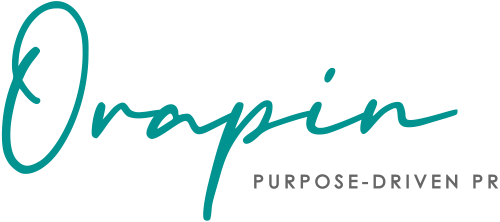
What is our approach to PR? We call it the “7 Ps of PR”
In our view, PR is an important tool to amplify the voice of the brand – be it a company, nonprofit, or individual. We believe there is tremendous value in sharing stories and expertise to increase awareness, build clout, and expand the reach of a company or thought leader’s message.
With greater visibility and reach, you can amplify your area of impact, increase your influence, and most importantly, drive business growth.
If all works as it should, an ongoing PR strategy will result in you becoming sought-after for your work and expertise and seen as an authority in your field. So how do you get there? By following the “7 P’s of PR.”
#1: Plan
You wouldn’t start a road trip without a destination in mind, and you shouldn’t start executing a PR program without a plan. You must first define measurable goals and get clarity around exactly what it is you want your PR strategy to achieve, and then outline how you’re going to get from where you are now to where you want to be.
#2. Prep
Take some time upfront to get your ducks in a row and create all the materials you’ll need to execute the plan. It’ll make your life easier than scrambling to put them together in real-time.
Put together an editorial/content calendar outlining the key topics and expertise you want to share. Be mindful of keywords – PR should support your SEO strategy.
If you are going to pitch your organization’s stories to the media, you’ll need to develop a targeted media list and outline top targets for print, broadcast, online, and influencers.
Create a media kit including an overview of your company/services/offerings, FAQ page, bios, and headshots for any members of the team who you may offer up as spokespeople or subject matter experts. It may also be worth including perhaps including a company manifesto outlining your stance and beliefs on your area of passion or expertise.
For personal brand building, create a personal website that outlines your personal mission, work and expertise, clips from past speaking gigs or podcast interviews, links to published articles or books, and any other material which shows your credentials and expertise in your field.
Make sure your social pages are active and updated with relevant information.
Create a calendar with potential awards opportunities in the coming year and potential speaking opportunities that you’d like to go after.
#3. Pitch
Good stories don’t make it into the news cycle if you don’t tell them. Get the word out about the work you’re doing and the impact you’re making. Form and maintain trusting relationships with reporters, know their beats, and find the angles that work for your news and their area of interest.
Draft byline articles and find publications that accept contributed content.
Throw your hat in the ring for speaking opportunities in a proactive way. If your name isn’t Oprah, then you have to let event organizers know you exist and help them understand why you should speak in front of their audience.
#4. Produce
Whether the content is for your own blog or you’re creating it in hopes of getting it published elsewhere, remember: Good content is king. Content should educate, inform, inspire, or entertain. Your audience wants to know how you can help them, not what you can sell them, and 99.9% of editors will not accept self-promotional content, so make sure the content you produce is checking one of the aforementioned boxes.
#5. Publish
Find the publications that reach your critical audiences and get your voice included. Getting your work published can come in the form of earned media through interviews, quotes, or bylines, or owned media where you self-publish via your blog, social channels, or newsletters.
#6. Promote
How do you promote that published article, media interview, blog post, or ebook? Make sure your audience sees it by sharing it on any and all possible communication channels to get the word out that you’ve been published. Share the link on all social channels, publish on your personal or business website, include the link in internal and external communications and newsletters. It’s not Field of Dreams – just because it exists, doesn’t mean your audience will see it. Put forth the effort to ensure that they do and don’t miss out on the opportunity to build trust and influence.
#7. (Re)Purpose
So your op-ed was published in a high profile publication? Wonderful! But don’t stop there! That content has value and can be repurposed many times over on your owned media channels. Create infographics or social posts highlighting key concepts, repurpose a byline article as a blog post or newsletter article, share the original published work along with follow-up content that does a deeper dive into some of your original thoughts.
Can the 7 P’s turn the dial for your business? Absolutely. These steps are the backbone of an effective PR strategy. And as with anything, the more time and effort you put into these seven concepts, the greater your results will be.
Photo by Danielle MacInnes on Unsplash

Rhiannon Hendrickson is the founder and CEO of Orapin, which helps purpose-driven organizations transform their random acts of PR into a strategic, consistent approach that generates greater awareness and impact. She has worked with organizations of all sizes across myriad industries and causes to develop earned media and thought leadership programs that generate awareness, engagement, and, ultimately, support for those that are making a meaningful impact.
